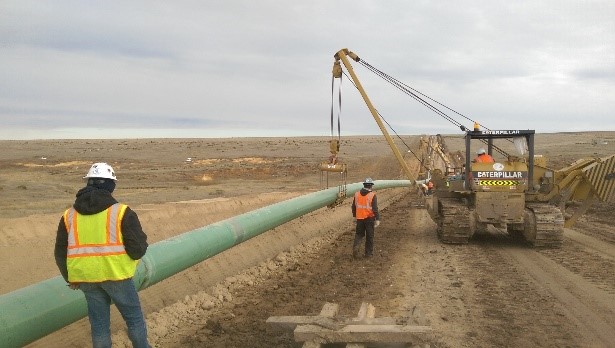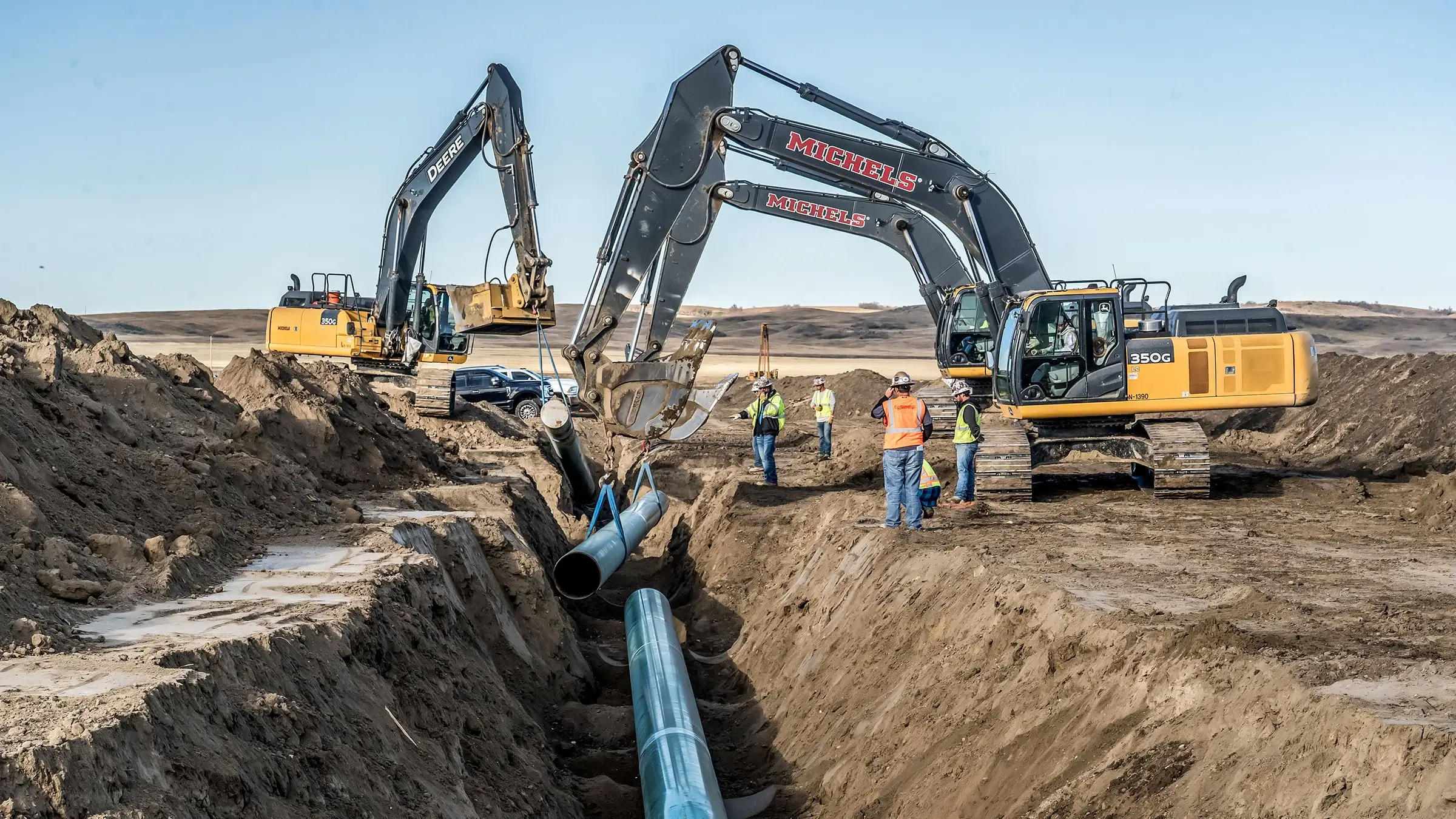How to Choose the Right Provider for Creek Pipe trenching services
Comprehending the Basics of Pipes Installation: What You Need to Find Out About the Refine
Appropriate pipe installation is important for any type of plumbing system. It requires careful factor to consider of numerous factors, consisting of product selection and adherence to regional guidelines. A well-planned design can avoid concerns like pressure loss, while the right tools assure efficient signing up with strategies. Also experienced installers can make usual mistakes. Comprehending these essentials can lead to a more effective and durable system, prompting a closer look at the key elements associated with the procedure.
Choosing the Right Materials for Pipe Installation
When taking into consideration pipe installation, the choice of proper materials is necessary to ensuring resilience and capability. Numerous materials are available, each offering special advantages and considerations. PVC pipes are light-weight, resistant to rust, and economical, making them excellent for property plumbing. Alternatively, copper pipes, recognized for their durability and capability to withstand high temperature levels, are frequently preferred for home heating systems.Additionally, galvanized steel pipelines offer toughness and longevity, suitable for sturdy applications, although they are vulnerable to corrosion over time.For underground setups, polyethylene pipelines are preferred due to their flexibility and resistance to stress and anxiety breaking. Correct product selection relies on the particular demands of the task, including stress scores, temperature variations, and the chemical nature of the fluids being transported - Creek Pipe near me. Inevitably, informed options pertaining to pipe materials contribute considerably to the total success and longevity of pipes systems
Comprehending Local Structure Codes and Laws
Exactly how can recognizing local building ordinance and regulations impact pipe installation? Familiarity with these codes is vital for ensuring that pipe installations are safe, certified, and effective. Neighborhood building regulations outline specific needs relating to products, installation methods, and security procedures, which need to be stuck to in order to avoid prospective lawful issues and costly fines.Failure to conform can cause assessments being stopped working, hold-ups in task conclusion, or also mandated removal of improperly installed pipelines. In addition, comprehending zoning laws and policies can influence the sort of products allowed, in addition to the methods made use of for installation.Contractors and homeowners alike need to invest time in evaluating local laws before commencing any installation job. This aggressive strategy not only advertises safety and security however also boosts the general top quality and durability of the plumbing system, eventually cultivating long-lasting functionality and fulfillment.
Planning Your Pipe Format and Style
Appropriate preparation of pipe design and design is essential for attaining an effective plumbing system. This procedure begins with evaluating the certain needs of the space, thinking about the location of components and appliances. Precise dimensions ensure that pipelines are correctly transmitted, reducing bends and transforms that can result in push loss.Consideration of the flow prices and the kinds of materials utilized is crucial, as various products have varying resilience and compatibility with pipes systems. In addition, the designer must represent future developments or modifications to the design, permitting for adaptability in case of renovations.Efficient drain and ventilation are additionally substantial elements of the layout, as they prevent clogs and ensure proper waste removal. Partnership with local structure codes guarantees compliance and security, which is extremely important in any kind of plumbing installation job.
Important Devices and Tools for Installation
Successful pipe installation rests on having the right devices and equipment at hand. Important tools include pipe cutters for clean cuts, wrenches for tightening up installations, and pliers for grasping and turning pipes. In addition, a level warranties pipes are mounted evenly, while a gauging tape help in accomplishing precise lengths.For certain materials, a welding torch might be needed for copper pipelines, while a PVC cutter is essential for plastic choices. Safety equipment, such as handwear covers and safety glasses, protects installers from prospective threats throughout the process.A pipeline bender can be specifically helpful for developing smooth curves without endangering honesty, while a torque wrench guarantees that links are protected to the manufacturer's specifications.Having these devices easily available not just promotes a smoother installation process yet likewise adds to the total resilience and functionality of the plumbing system. Proper tools is critical in achieving long-lasting outcomes.
Techniques for Appropriate Pipe Signing Up With and Securing
Achieving a safe and secure and leak-free connection in between pipelines calls for careful focus to signing up with and sealing techniques. Different methods exist, each matched to various pipe materials and applications (Creek Pipe HDPE installation). For instance, welding is typically utilized for steel pipelines, ensuring durable links through heat blend. On the other hand, plastic pipelines benefit from solvent cement or combination welding, developing strong, permanent bonds.Threaded links are usual in both metal and plastic piping, needing precise alignment and the usage of proper sealants, such as Teflon tape or pipe dope, to avoid leakages. Compression fittings provide one more choice, where mechanical pressure protects the pipelines together, making them conveniently dismantled for maintenance.Regardless of the method chosen, correct preparation is vital. This includes cleansing pipe ends and ensuring they are without particles. Applying these methods vigilantly will improve the long life and reliability of the pipe system, eventually adding to its effective performance
Typical Errors to Stay Clear Of Throughout Installation
Throughout pipe installation, avoiding common errors is crucial for ensuring a dependable and reliable system. One constant mistake is falling short to gauge and cut pipes accurately, which can result in improper installations and leaks. In addition, neglecting to examine the compatibility of products can lead to corrosion or various other damage over time. Poorly safeguarding joints and links can also develop powerlessness in the system, creating possible failures.Another usual error is forgeting the relevance of slope and drainage; pipes should be mounted at the right angle to promote appropriate flow. Insufficient assistance for pipelines can result in drooping and anxiety, affecting the honesty of the system. Inevitably, neglecting local codes and guidelines can result in costly rework and safety dangers. By knowing these risks, installers can significantly boost the toughness and performance of pipe systems.
Maintenance Tips for Durable Pipe Solutions
To ensure the durability of pipe systems, regular evaluations and cleaning are necessary techniques. These steps aid recognize possible issues before they escalate into significant troubles. Additionally, employing appropriate insulation techniques can further secure pipelines from temperature level variations and environmental aspects.
Regular Evaluations and Cleansing
Regular assessments and cleaning are important for keeping the longevity and effectiveness of pipe systems. On a regular basis taking a look at pipes for indicators of rust, leaks, or clogs can aid identify prospective concerns before they escalate right into expensive repair work. Cleaning up pipes occasionally gets rid of buildup that can restrict circulation and promote degeneration. It is a good idea to arrange examinations at the very least when a year, but more constant checks may be needed in high-usage settings. Using specialist services for thorough cleaning guarantees that all debris is efficiently cleared. In addition, keeping documents of inspections and maintenance activities help in tracking the system's health in time - Creek Pipe reviews. By focusing additional hints on these techniques, residential or commercial property owners can improve the reliability and life expectancy of their try here pipe systems
Appropriate Insulation Techniques
Effective insulation techniques play an essential duty in keeping the effectiveness and long life of pipe systems. Appropriate insulation decreases warmth loss in hot water pipelines and avoids cold in cold water pipelines, significantly reducing energy prices and potential damages. Typical products used for insulation include fiberglass, foam, and rubber, each offering differing degrees of thermal resistance. It is vital to assure that insulation is used consistently, covering all revealed areas without voids. Furthermore, safeguarding insulation with appropriate bolts assists keep its position and efficiency gradually. Regular assessments should be carried out to recognize wear and tear, guaranteeing timely substitutes. By applying these techniques, pipe systems can operate successfully and have an extensive life span, eventually profiting both the atmosphere and the house owner.

Frequently Asked Questions
Exactly how Do I Identify the Appropriate Pipe Dimension for My Project?
Identifying the ideal pipe dimension entails examining the job's flow demands, pressure specifications, and the type of fluid being transferred. Consulting style requirements and conducting calculations warranties excellent efficiency and performance in the installation procedure.
What Are the Environmental Impacts of Different Pipe Products?

Can I Mount Pipes Myself or Should I Work with a Professional?
The question of whether to mount pipelines separately or great post to read hire a specialist typically depends on the person's ability level and project complexity. A specialist might guarantee conformity with laws and lower prospective long-term concerns.

How Much Time Can I Expect My Pipe Installation to Last?
The longevity of pipe installation differs significantly, normally lasting 20 to 100 years, relying on products, installation quality, and upkeep. Routine assessments and appropriate treatment can improve sturdiness and avoid premature failings.

What Are the Signs of a Failing Pipe System?
Indicators of a falling short pipe system include regular leaks, uncommon water stress modifications, stained water, mold and mildew development, and persistent dampness. Home owners need to monitor these indicators to stay clear of expensive damage and warranty timely fixings are made.